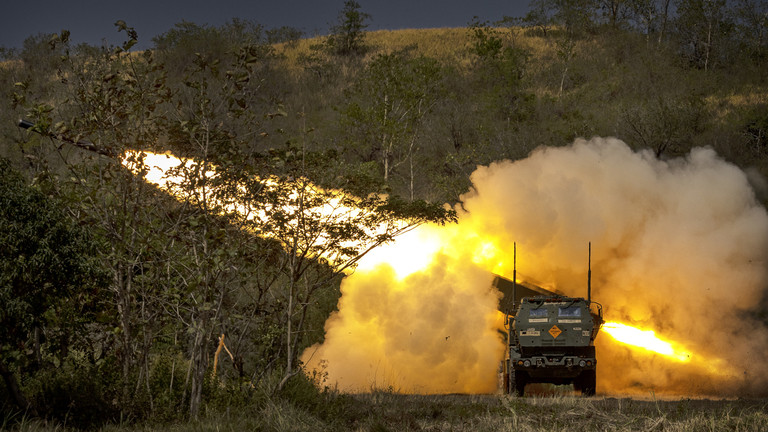The US has recently taken a significant step in its involvement in the Ukraine-Russia conflict, authorizing Ukraine to use certain US-supplied weapons for strikes within Russian territory. This policy shift, aimed at defending the Kharkov Region, marks a crucial development in the ongoing war. The Biden administration's decision underscores the strategic importance of Kharkov and reflects broader geopolitical calculations. Understanding the implications of this move requires a comprehensive look at the authorized weapons, the potential risks, and the international response.
Policy Shift and Authorization
Details of Biden Administration's Directive
The Biden administration has directed its team to ensure that Ukraine can utilize US-supplied weapons specifically for counter-fire purposes in the Kharkov Region. This directive represents a nuanced policy adjustment, permitting limited strikes deep within Russian territory. The official statements emphasize that this decision is intended to bolster Ukraine's defensive capabilities amid Russia's offensive.
Limitations and Conditions of the Authorization
Despite the authorization, there are clear limitations. The use of ATACMS, known for their long-range strike capabilities, remains prohibited. Instead, Ukraine can employ the Guided Multiple Launch Rocket System (GMLRS), High Mobility Artillery Rocket System (HIMARS), and certain artillery systems. This selective allowance aims to provide Ukraine with tactical advantages without provoking broader conflict escalation.
Statements from Ukrainian and Russian Officials
Sergey Nikiforov, spokesperson for Ukrainian President Vladimir Zelensky, confirmed that the US had permitted the use of American weapons against previously restricted targets in Russia. In response, Russian President Vladimir Putin highlighted that Ukraine had already conducted strikes in Russian regions like Belgorod, prompting Russian cross-border operations in Kharkov. Putin warned that using NATO weaponry for long-range strikes could escalate the conflict significantly.
Weapons Systems Approved for Use
Guided Multiple Launch Rocket System (GMLRS)
The GMLRS is a key component of the newly authorized weaponry. Known for its precision and range, the GMLRS has a proven track record in various conflicts. It offers Ukraine the ability to target enemy positions with high accuracy, enhancing their defensive operations in Kharkov.
High Mobility Artillery Rocket System (HIMARS)
HIMARS, another pivotal system, provides flexibility and mobility. Its ability to deliver precise strikes while remaining agile on the battlefield makes it invaluable for Ukraine's counter-offensive strategies. HIMARS has already demonstrated its effectiveness in previous engagements, solidifying its role in the current conflict.
Artillery Systems
Various artillery systems have also been approved, each with distinct capabilities. These systems enable sustained bombardment of enemy positions, disrupting Russian advances and fortifying Ukrainian defenses. The combination of GMLRS, HIMARS, and artillery systems equips Ukraine with a versatile and potent arsenal.
Strategic Implications
Impact on the Defense of Kharkov Region
The authorization to use these advanced weapon systems is expected to significantly bolster the defense of Kharkov. By enhancing their offensive capabilities, Ukrainian forces can better repel Russian advances, potentially stabilizing the front lines in this critical region.
Potential Escalation of the Conflict
While the new policy aims to strengthen Ukraine's defense, it also carries risks of escalating the conflict. Allowing strikes within Russian territory could provoke a stronger response from Moscow, potentially drawing the US and NATO into a more direct confrontation with Russia. This delicate balance underscores the strategic complexity of the decision.
International Reactions
NATO allies have largely supported the US decision, viewing it as a necessary measure to support Ukraine. However, some non-NATO countries have expressed concerns about the potential for wider conflict. The international community remains divided, reflecting the broader geopolitical stakes involved.
Historical Context
US Military Aid to Ukraine
The US has provided extensive military aid to Ukraine since the onset of the conflict. This aid has evolved from non-lethal assistance to more advanced weaponry, reflecting the changing dynamics of the war. The latest authorization marks a continuation of this trend, adapting to Ukraine's evolving needs.
Previous Restrictions on Ukraine's Use of US-Supplied Weapons
Initially, US policy strictly prohibited the use of supplied weapons for strikes within Russian territory. This stance was intended to prevent escalation and maintain a defensive posture. Over time, however, the policy has adjusted in response to the realities on the ground, culminating in the current directive.
Geopolitical Analysis
US-Russia Relations
US-Russia relations have been strained for decades, with historical tensions exacerbated by the Ukraine conflict. The current policy shift further complicates this relationship, highlighting the strategic rivalry between the two powers.
Ukraine's Position and Strategy
Ukraine's strategy has focused on defending its territory while seeking international support. The authorization to use advanced US weaponry enhances their military capabilities, aligning with their broader strategic objectives.
Broader Regional Impact
The conflict has significant implications for the broader region. Neighboring countries are closely monitoring developments, with some potentially reconsidering their alliances and security arrangements in response to the evolving situation.
Expert Opinions
Military Analysts' Views
Military experts have varied opinions on the potential outcomes of the new policy. Some argue that it will strengthen Ukraine's defense, while others warn of the risks of escalation. The consensus is that the situation remains highly fluid and unpredictable.
Diplomatic Perspectives
Diplomats emphasize the need for continued dialogue and negotiation to prevent further escalation. The US authorization is seen as a double-edged sword, offering tactical advantages but also complicating diplomatic efforts.
Economic Impact Analysis
The ongoing conflict has significant economic implications, affecting global markets and regional economies. The cost of sustained military engagement is high, with long-term impacts on both Ukraine and Russia, as well as on global economic stability.
Personal Stories and Case Studies
Accounts from Soldiers on the Ground
Soldiers on the front lines have shared their experiences with US-supplied weapons, highlighting their effectiveness and the boost in morale they provide. These accounts offer valuable insights into the practical impact of the new policy.
Civilians' Perspectives
Civilians living in conflict zones face immense challenges and uncertainties. Their perspectives underscore the human cost of the conflict and the urgent need for effective solutions.
Preventive Measures and Future Prospects
Strategies to Prevent Further Escalation
Preventing further escalation requires a multifaceted approach, including diplomatic initiatives, military de-escalation tactics, and continued international engagement. These strategies aim to stabilize the situation and pave the way for a long-term resolution.
Future Prospects for Peace
Despite the current challenges, there are potential pathways to peace. Continued dialogue, coupled with effective conflict management, could eventually lead to a negotiated settlement. The international community's role in supporting these efforts remains crucial
I'm reaching out to ask for help in raising funds to purchase a modest, dependable used car. Having a vehicle would not only restore my independence but also allow me to engage more actively in my community and maintain essential aspects of daily living.
Help Chris Regain Independence with a Reliable Vehicle at GoGetFunding



Hello.
Good luck
Hello!
Good luck
Hey people!!!!!
Good mood and good luck to everyone!!!!!
Hello.
Good luck